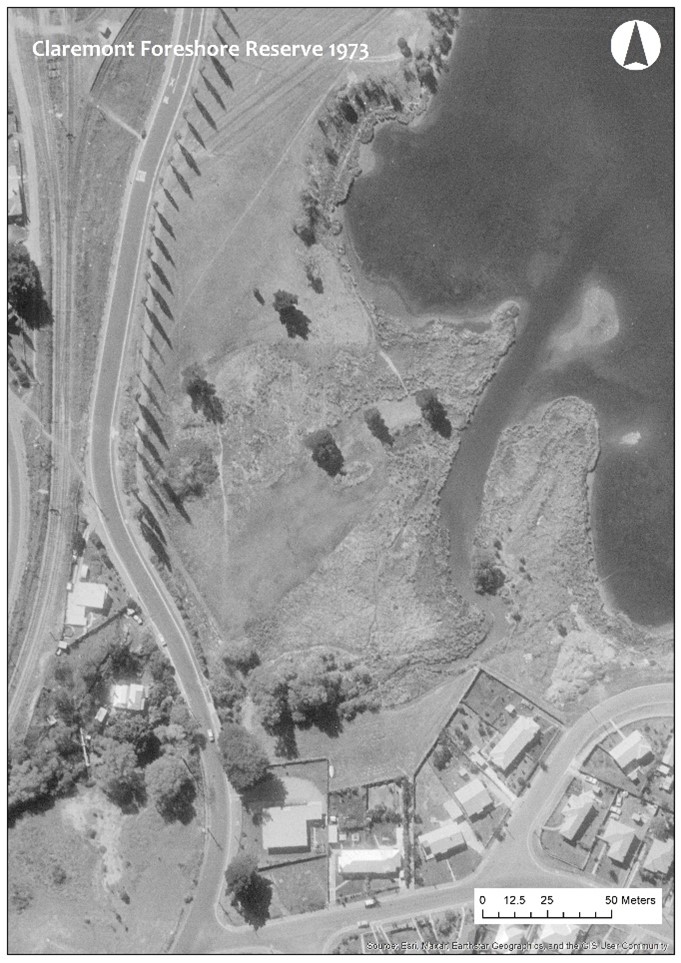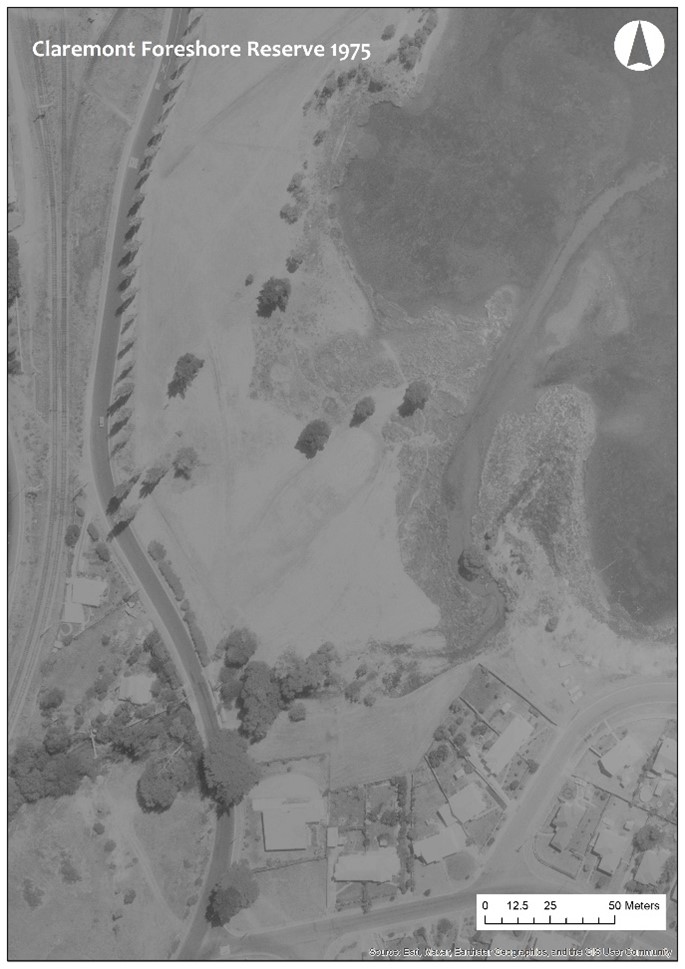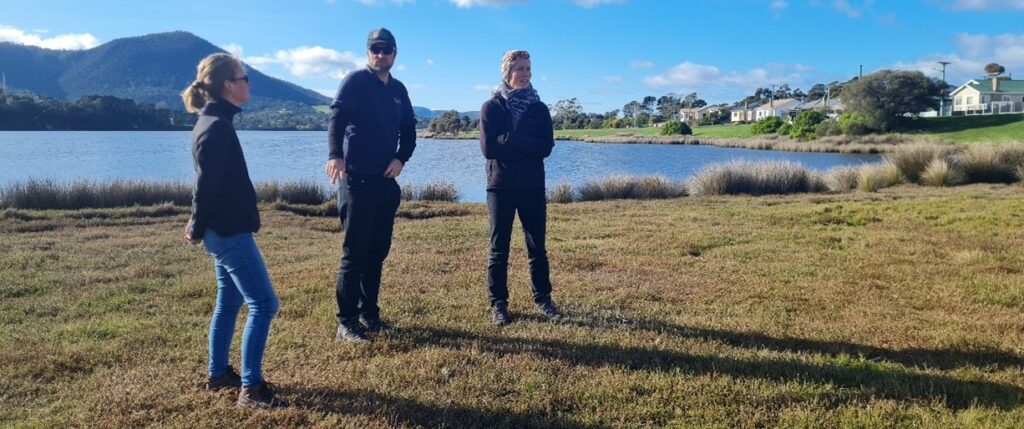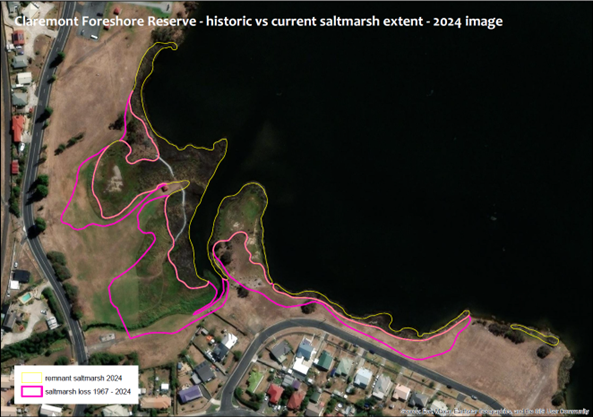Restoring lost saltmarsh on the River Derwent in Hobart
NGT has recently been engaged by the Derwent Estuary Program (DEP) to complete an assessment and develop a restoration plan for an area of saltmarsh at Windermere Bay on the shores of the River Derwent at Claremont, north of Hobart. In contrast to many of the restoration projects we get involved in, and particularly for our projects completed in Tassie to date, this project is focused on a wetland that has been ‘infilled’ rather than ‘drained’. It appears the saltmarsh area was partially covered with infill material sometime between March 1973 and March 1975, as the images below show. It appears to have remained in a similar state since this time; however, about half of the saltmarsh vegetation was lost during this period.


Aerial photos of Windermere Bay from March 1973 (left) and March 1975 (right).
Area of saltmarsh lost to infilling. Map: Ben Taylor
The nationally vulnerable ‘Temperate Coastal Saltmarsh’ vegetation community is well recognised as a key environmental asset of the Derwent Estuary. The Windermere Bay saltmarsh was one of twenty sites included in the Derwent Estuary Saltmarsh Project undertaken in 2018 as a joint venture between the University of Tasmania and DEP. It is located within a popular recreational area, adjacent to Faulkner’s Rivulet at Claremont, and there is also a raised boardwalk through sections of the marsh.
The Glenorchy City Council has been implementing a management program at the site over the past five years which has involved weed control (including invasive Spiny Rush) and modification of the maintenance mowing regime of adjacent parkland. Other threatening processes at the site include off-lead dog impacts on bird life, encroachment by environmental weeds such as Boneseed, Asparagus, Mirror Bush, and infill of the saltmarsh area altering local eco-hydrology including the tidal connectivity of the Windemere Bay saltmarsh to the Derwent estuary.
DEP identified an opportunity to remove some of the infill to promote saltmarsh restoration and recovery in affected areas. Windermere Bay has adequate potential for saltmarsh to migrate landwards over time in response to climate change, and capacity to expand the current extent of the marsh through both passive and active restoration options. NGT met with DEP onsite in 2023 to discuss options for restoration, which has led to this exciting new project.
The project will include NGT undertaking an eco-hydrological assessment of the Windemere Bay saltmarsh to understand historic changes to hydrology, trajectory of ecosystem condition, restoration objectives and opportunities to maintain and improve extant saltmarsh and estuarine ecosystems. Based on the assessment, a restoration plan will be developed to guide future management and restoration activities. Implementation of the restoration plan will be coordinated with a boardwalk extension and upgrade project being led by council.

The project kicked off in earnest in July 2024 and will continue for the next 12-18 months. We’ll keep you posted with project insights as we get to know the site and understand how best to potentially reverse eco-hydrological change at this important urban area of Derwent Estuary saltmarsh over the coming year!
This project is being delivered by NGT in partnership with the Derwent Estuary Program, with funding provided by the Australian Government’s Urban Rivers and Catchments Program


